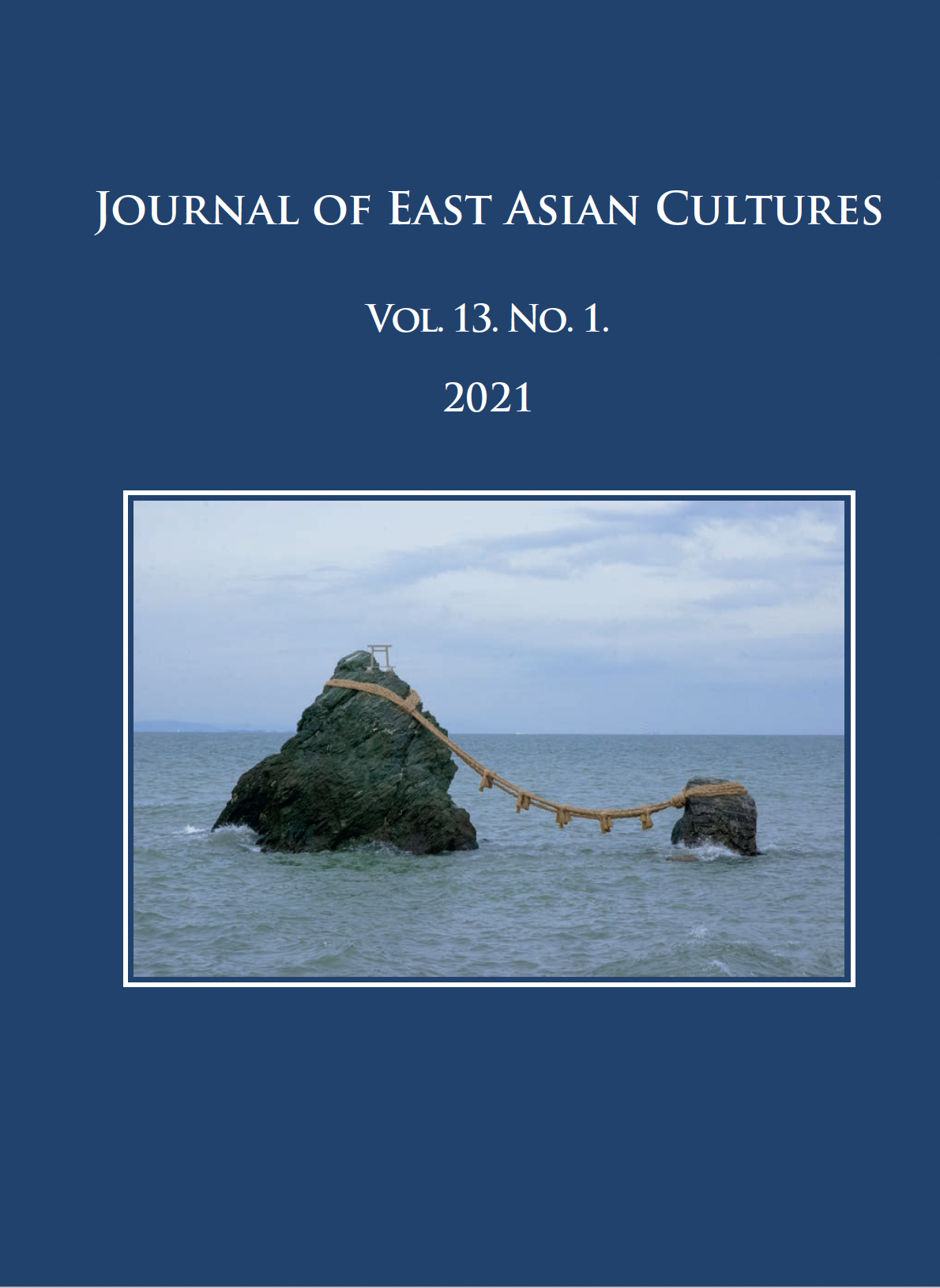The Role of Family in Modern China: A Blended Compressed Transformation of the Private and Public Spheres
Megjelent 2021-12-15
Kulcsszavak
- Mozaik-modernitás,
- privát szféra,
- nyilvánosság,
- kollektivizmus,
- piacgazdaság
- családpolitika ...Tovább
Hogyan kell idézni
Copyright (c) 2021 a szerző(k)

This work is licensed under a Creative Commons Attribution-NonCommercial 4.0 International License.
Absztrakt
Míg a maói korszak (1949–1976) a korábbi hagyományos gyakorlattal ellentétben a családi kapcsolatok helyett inkább a munkahelyi kapcsolatokra helyezte a hangsúlyt, az ezt követő időszak ismét kiemelte a család mint alapvető társadalmi egység jelentőségét. A kínai modernizáció sajátos jellege miatt azonban a család a mai Kínában egyszerre mutat hagyományos, modern és posztmodern jellegzetességeket. Például míg a családon belüli kapcsolatoknál a szülők iránti tisztelet hangsúlyozása a hagyományos konfuciánus ideológia továbbélésének tekinthető, a szülői beleszólást elutasító párválasztás szabadságának eszméje már modern jelenség. Ezzel szemben a jelenlegi alacsony termékenységi mutató – igaz, a korábbi egykepolitika eredményeként – a kínai családok egyfajta posztmodern jellegére utal. Ez a mozaikos jelleg a privát szféra és a különféle politikai, gazdasági és civil szférák kapcsolatának bonyolult formálódásában is megmutatkozik. Az azonban kétségkívül elmondható, hogy a mai Kínát, amelynek kutatása a változatos modernizációs utak jobb megértése terén új távlatokat kínál a társadalomtudományok számára, egyfajta modern kori családközpontúság jellemez, ahol a család továbbra is alapvető szerepet játszik a társadalmi felelősségvállalásban és társadalmi fejlődésben.
Hivatkozások
- Chai, Yanwei. 2014. “From Socialist Danwei to New Danwei: A Daily-Life-Based Framework for Sustainable Development in Urban China.” Asian Geographer 31.2: 183–190. https://doi.org/10.1080/10225706.2014.942948
- Christensen, Karen S. – Levinson, David (eds.) 2003. Encyclopedia of Community: From the Village to the Virtual World, Volume 1st. Thousand Oaks, London, New Delhi: Sage Publications, Inc.
- Christiansen, Flemming – Zhang, Junzuo 1998. “Introduction: The Village Revisited.” In: Flemming Christiansen – Zhang Junzuo (eds.) Village Inc.: Chinese Rural Society in the 1990s. Honolulu: University of Hawaii Press, 1–21.
- Davis, Deborah 2019. “Re-Verticalizing Urban Kinship.” Paper presented at the SASS World Forum on China Studies, Panel on Family Structure and Relationships, Shanghai, China, September 11. https://doi.org/10.1525/california/9780520077973.003.0001
- Davis, Deborah – Harrell, Stevan 1993. “Introduction: The Impact of Post-Mao Reforms on Family Life.” In: Deborah Davis – Stevan Harrell (eds.) Chinese Families in the Post-Mao Era. Berkeley: University of California Press, 1–22.
- Dikötter, Frank 2010. Mao’s Great Famine: The History of China’s Most Devastating Catastrophe, 1958–1962. New York, London, Oxford, New Delhi, Sydney: Walker & Co.
- Feng, Chuan – Nelson, Leyton P. – Simon, Thomas W. 2016. China’s Changing Legal System: Lawyers & Judges on Civil & Criminal Law. Houndmills, Basingstoke, Hampshire; New York, NY: Palgrave Macmillan.
- Greenhalgh, Susan 2005. “Missile Science, Population Science: The Origins of China’s One-Child Policy.” The China Quarterly 182: 253–276. https://doi.org/10.1017/S0305741005000184
- Haerpfer, Christian et al. (eds.) 2020. World Values Survey: Round Seven – Country-Pooled Datafile. Madrid, Vienna: JD Systems Institute & WVSA Secretariat. https://doi.org/10.14281/18241.1
- Horváth Attila 2008. “A szovjet család- és házassági jog” [The Soviet family and marriage law]. Iustum Aequum Salutare 4.3: 55–63.
- Inglehart, Ronald et al. (eds.) 2020. World Values Survey: All Rounds – Country-Pooled Datafile. Madrid, Vienna: JD Systems Institute & WVSA Secretariat [Version: http://www.worldvaluessurvey.org/WVSDocumentationWVL.jsp].
- Liu, Li 2008. “Filial Piety, Guanxi, Loyalty, and Money: Trust in China.” In: Ivana Marková – Alex Gillespie (eds.) Trust and Distrust: Sociocultural Perspectives. Charlotte, NC: Information Age Publishing, Inc., 51–77.
- Macrotrends. China Life Expectancy 1950–2020, https://www.macrotrends.net/countries/CHN/china/life-expectancy (accessed: 20.02.2020).
- Qu Haibo 曲海波 1987. “Xin Zhongguo renkou lilun yanjiu licheng shuping” 新中国人口理论研究历程述评 [A review of the development of population theory studies in new China]. Renkou yanjiu 人口研究 11.2: 36–41.
- Qu Haibo 曲海波 1988. “Shilun woguo renkouxue yanjiu duixiang de queding ji xueke tixi de jianli” 试论我国人口学研究对象的确定及学科体系的建立 [A discussion on demography as a subject of research and its introduction into the academic system in China]. Renkou yanjiu 人口研究 12.3: 8–13.
- Somlai Péter 1990. “A szabad szerelemtől az ellenőrzött magánéletig. Családpolitika a Szovjetunióban 1917 után” [From free love to controlled privacy. Family policy in the Soviet Union after 1917]. Társadalmi Szemle 45.6: 25–40.
- Tian, Felicia F. – Davis, Deborah S. 2019. “Reinstating the Family: Intergenerational Influence on Assortative Mating in China.” Chinese Sociological Review 51.4: 337–364. https://doi.org/10.1080/21620555.2019.1632701
- Wang, Feng – Cai, Yong – Gu, Baochang 2012. “Population, Policy, and Politics: How Will History Judge China’s One-Child Policy?” Population and Development Review 38 (Supplement): 115–129. https://doi.org/10.1111/j.1728-4457.2013.00555.x
- Wang, Jiawen – Weisfeld, Carol C. 2018. “The Changing Family in China.” In: Carol C. Weisfeld – Glenn E. Weisfeld – Lisa M. Dillon (eds.) The Psychology of Marriage: An Evolutionary and Cross-Cultural View. Lanham, MD: Lexington Books, 107–124.
- Wang, Yuesheng 2014. “An Analysis of Changes in the Chinese Family Structure between Urban and Rural Areas: On the Basis of the 2010 National Census Data.” Social Sciences in China 35.4: 100–116. https://doi.org/10.1080/02529203.2014.968349
- Wu Xiaoying 吴小英 2016. “《Qujiatinghua》haishi《jiatinghua》: jiating lunzheng beihou de《zhengzhi zhengque》”《去家庭化》还是《家庭化》:家庭论争背后的《政治正确》[“Defamilialisation” or “familialisation”[?]: “political correctness” behind family debates]. Hebei xuekan 河北学刊 36.5: 172–178.
- World Values Survey (WVS). Online survey database, accessed 2020.
- Xia, Yan R. – Zhou, Zhi G. 2003. “The Transition of Courtship, Mate Selection, and Marriage in China.” In: Raeann R. Hamon – Bron B. Ingoldsby (eds.) Mate Selection Across Cultures. Thousand Oaks, London, New Delhi: Sage Publications, Inc., 231–246. https://doi.org/10.4135/9781452204628.n13
- Xu, Anqi – Xue, Yali 2016. “Family Structure.” In: Xu Anqi – John DeFrain – Liu Wenrong (eds.) The Chinese Family Today. London and New York: Routledge, 14–58. https://doi.org/10.4324/9781315642611

